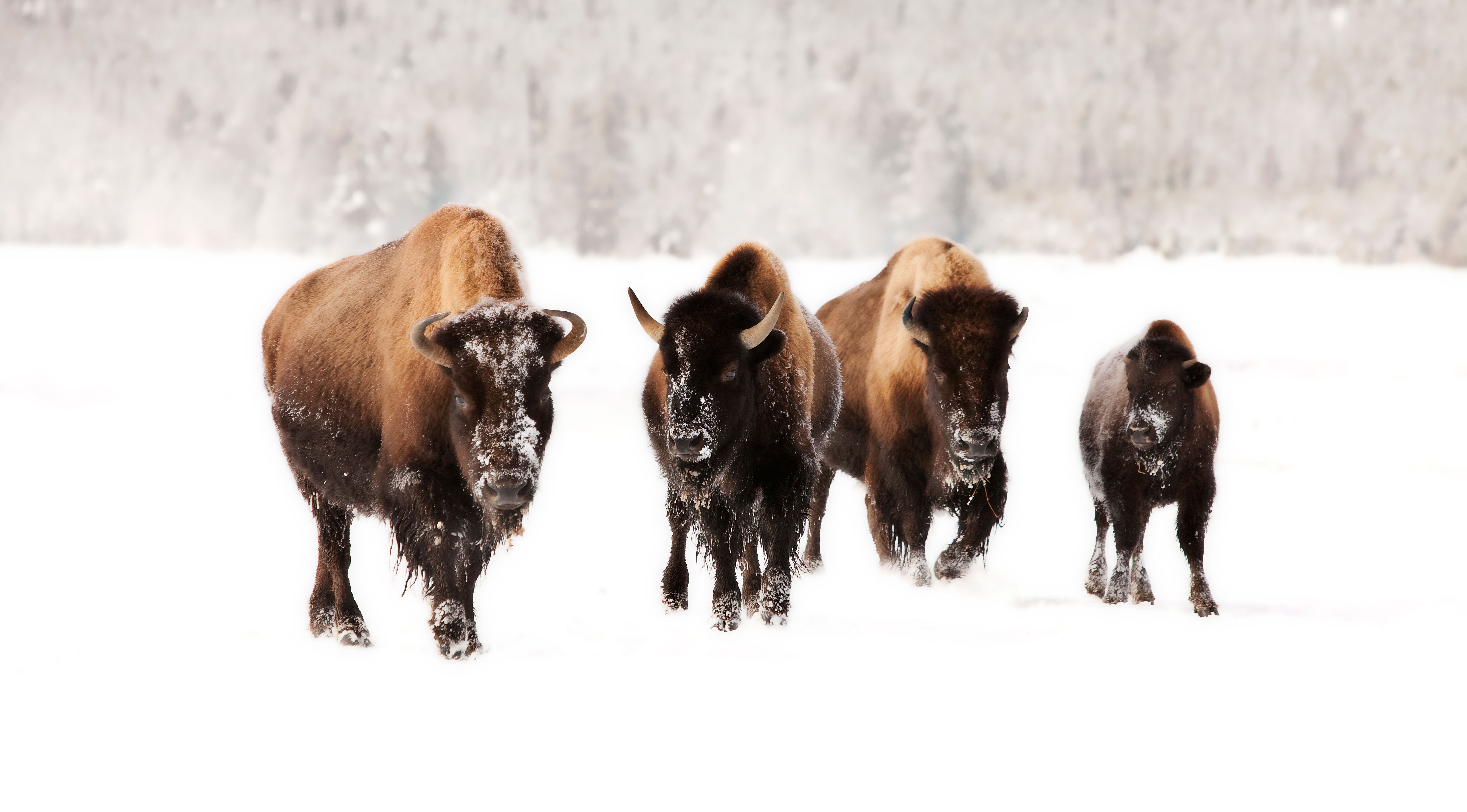They’re diligent in keeping the park’s buildings free of snow
As one of a handful of Yellowstone National Park’s winterkeepers, Bill Keys occupies a solitary, frozen — and captivating — landscape. His primary task from December to March: clearing snow from rooftops of lodges and cabins to prevent damage from the weight of Yellowstone’s prodigious snowfalls.
Two park hotels, the Old Faithful Snow Lodge and Mammoth Hot Springs Hotel, welcome guests for winter discovery from late December to early March. But other visitor facilities are shuttered from mid-October to late April.
That’s where Keys and his fellow winter caretakers come in.
Spending a number of years as a winterkeeper at Yellowstone, Keys embraces the tradition that dates to the park’s late 19th-century origins. His seasonal home is a cabin near Lake Yellowstone, where among other structures, he clears snow from Lake Hotel. The waterfront Colonial Revival beauty is one of the park’s most iconic lodgings. And yes, his work there elicits quips about the horror movie The Shining. But Keys says his world is really more akin to Disney’s Frozen.
“This morning it was 22 below zero. When it’s that cold, you don’t move snow. Snow in Yellowstone is dry and fluffy. You can’t make a snowball with it. But it hardens when it’s really, really cold. So you wait until it sets up and you can cut it.”
Tools of the trade include a crosscut saw to cut the ice blocks, and a flat coal shovel to push them off the rooftops. In a region where annual snowfall can measure from 10 to 20 feet, those ice blocks can be six or seven feet tall in areas where the snow has drifted, he says.
Other winterkeeper duties include maintaining trails and keeping an eye on cabins, employee dorms, and other structures.
“You have to move snow, but the job is also about just being here,” Keys says. “Classically, the winterkeeper just made sure things didn’t get destroyed.”
Yellowstone’s early winterkeepers were generally regarded as hermits and eccentrics. The life remains a solitary one, but with the advent of snowmobiles, it’s considerably less isolated. Cell phone service is fairly reliable. Keys even has a satellite dish.
His circa 1940s cabin is propane-heated and has a fireplace. At the start of the season, he makes a couple of Costco runs to stock up on food and other necessities. And two or three times during winter, he makes the 70-mile trip via snowmobile into the town of West Yellowstone, Montana, for fresh fruit, vegetables and milk.
“It’s amazing what biting into an apple will do for you when you haven’t had anything fresh for months,” he says.
The best thing about this job? The solitude. Clearing snow has a Zen-like quality. It’s manual, but it’s not mindless, Keys says.
“I like being self-reliant and living in a place where everything requires more thought. Are the roads closed? Is a storm moving in? Is there going to be drifting snow?”
And the worst thing about the job?
“Solitude is good, but the separation (from family and friends) can get to you,” he says.
When Keys first arrived in Yellowstone his intent was to stay a single summer. That was over six years ago. Still, he’s got nothing on two fellow winterkeepers, Steven Fuller and Dale Fowler, who have maintained their posts for over 40 years respectively.
What the future holds for Keys is unknown. But for now, Yellowstone’s magical winters suit him just fine.
“Summer can be stressful [when he serves as maintenance supervisor]. Winter is decompression time,” he says. “We work the summer to have the winter.”


